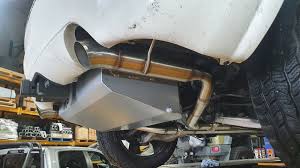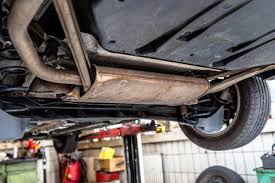Does It Matter What Color Antifreeze You Use?

Antifreeze plays a crucial role in maintaining your car’s engine temperature and preventing it from freezing or overheating. But with so many different colors available—green, orange, pink, yellow, and more—you might wonder, does the color of antifreeze actually matter? In this blog, we’ll delve into the importance of antifreeze color, what it signifies, and how to choose the right one for your vehicle.
What Does Antifreeze Color Mean?
The color of antifreeze isn’t just for aesthetics; it’s an indicator of the chemical composition and type of coolant. Different colors are used to signify different formulations, which are designed for specific types of engines and cooling systems.
Common Antifreeze Colors and Their Meanings
- Green Antifreeze
- Traditional antifreeze with Inorganic Additive Technology (IAT).
- Suitable for older vehicles made before the mid-1990s.
- Orange Antifreeze
- Contains Organic Acid Technology (OAT).
- Typically used in GM and European vehicles.
- Pink or Red Antifreeze
- Hybrid Organic Acid Technology (HOAT).
- Common in modern cars from manufacturers like Toyota and Volkswagen.
- Yellow or Gold Antifreeze
- Another variation of HOAT, used in some American and European vehicles.
- Blue Antifreeze
- Primarily seen in Asian vehicles like Honda, Subaru, and Nissan.
Why Antifreeze Color Matters
1. Chemical Compatibility
The chemical composition of antifreeze determines its compatibility with your vehicle’s engine and cooling system. Using the wrong type can cause corrosion, scaling, or blockages.
2. Performance
Each antifreeze type is designed to meet specific performance standards. For instance:
- Green antifreeze works well in older systems with brass or copper components.
- Orange antifreeze is ideal for modern aluminum engines.
3. Longevity
The type of antifreeze also affects how often you need to change it.
- Green antifreeze typically requires replacement every 2–3 years.
- Orange and pink antifreeze may last up to 5 years or 150,000 miles.
Can You Mix Different Colors of Antifreeze?
Mixing antifreeze colors is generally not recommended. Different types of antifreeze may have incompatible chemical compositions, which can lead to:
- Reduced effectiveness.
- Corrosion of engine components.
- Formation of sludge or gel-like substances that clog the cooling system.
If you’re unsure about the antifreeze in your car, it’s best to flush the system and refill it with the correct type.
How to Choose the Right Antifreeze for Your Car
1. Check Your Owner’s Manual
Your vehicle’s manual will specify the recommended type of antifreeze based on the engine and cooling system design.
2. Look for Manufacturer-Specific Formulations
Some car manufacturers, like Honda or GM, have specific antifreeze formulations tailored to their vehicles.
3. Consider Climate Conditions
If you live in an area with extreme weather, ensure the antifreeze you choose has the appropriate freeze and boil-over protection levels.
Signs You’re Using the Wrong Antifreeze
Using the wrong antifreeze can lead to several issues. Watch out for these signs:
- Overheating Engine: Incompatible antifreeze may fail to regulate temperature effectively.
- Rust or Corrosion: Visible rust around the radiator or cooling system components.
- Discolored Coolant: A milky or sludgy appearance indicates mixing of incompatible antifreezes.
- Leaking Coolant: Damaged seals caused by the wrong antifreeze can result in leaks.
Frequently Asked Questions About Antifreeze Color
1. Does Antifreeze Color Really Matter?
Yes, the color often indicates the chemical formulation, which is crucial for compatibility with your vehicle’s cooling system.
2. Can I Use Universal Antifreeze?
Some universal antifreezes claim compatibility with all types, but it’s best to consult your vehicle’s manual or a professional mechanic to avoid risks.
3. What Happens If I Use the Wrong Antifreeze?
Using the wrong antifreeze can lead to corrosion, overheating, or system blockages, potentially causing expensive repairs.
4. How Often Should I Replace Antifreeze?
This depends on the type of antifreeze and your vehicle. Generally, traditional green antifreeze requires more frequent changes than modern formulations.
5. How Can I Check My Antifreeze Type?
Look for labels or markings on the antifreeze container, or consult a mechanic if the existing antifreeze in your car needs to be identified.
Conclusion
The color of antifreeze isn’t just a visual cue—it provides valuable information about its chemical composition and compatibility with your vehicle. Choosing the right antifreeze is essential for maintaining your car’s cooling system and preventing costly damage.
Always consult your vehicle’s manual, stick to the recommended type, and avoid mixing different antifreeze colors. By understanding the importance of antifreeze color and composition, you can ensure your vehicle remains in optimal condition, regardless of the weather.
Also Check:
• Does Peek Green Radiator Fluid Meet FL-22 Specs?






4 Comments